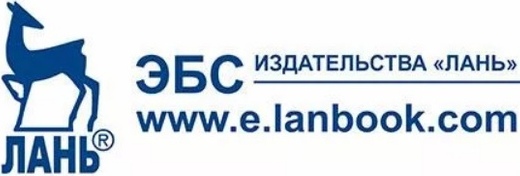Methodological approaches to assessing the impact of the sports industry on ensuring the implementation of federal projects
The relevance of the research topic lies in the growing role of the sports industry in the socio-economic development of the country. The sports industry, covering a wide range of activities, from organizing sports events to producing sports equipment, has a significant impact on employment, promoting a healthy lifestyle and increasing the tourist attractiveness of regions. Assessing the impact of the sports industry on the implementation of federal projects requires an integrated approach that takes into account both direct and indirect effects. Direct effects include creating new jobs, increasing tax revenues and developing sports infrastructure. Indirect effects are associated with improving public health, increasing labor productivity and creating a positive image of the country. An important aspect is the development of a system of indicators that will assess the effectiveness of sports projects and their contribution to achieving the goals of federal projects. Such a system should include indicators characterizing the economic, social and environmental effects of the development of the sports industry. The main objective of this article is to consider and study methodological approaches to assessing the impact of the sports industry on ensuring the implementation of federal projects. The article analyzes various methodological approaches used to assess the impact of the sports industry on the implementation of federal projects in the Russian Federation. The study covers such methods as econometric modeling, evaluation of private investment and public-private partnership mechanisms, socio-economic models, marketing strategies and evaluation of multiplier effects. These methods provide an opportunity to comprehensively analyze how the sports sector contributes to the implementation of national objectives and stimulates regional development. Based on the results of the study, it is concluded that, despite certain methodological difficulties, these approaches provide important information on the role of the sports industry in strengthening the country's economic base and improving the standard of living of the population. Continued work on improving sports projects and methods for their evaluation will remain a key factor for the sustainable development of Russia in the future. The studied methodological approaches to assessing the impact of the sports industry on ensuring the implementation of federal projects contribute to the improvement of management and financing mechanisms in the field of sports. This will allow for a more efficient allocation of resources, directing them to priority areas that contribute to the achievement of the target indicators of national projects.
Khairullina, E. G. (2025), “Methodological approaches to assessing the impact of the sports industry on ensuring the implementation of federal projects”, Research Result. Business and Service Technologies, 11 (1), pp. 85-95. DOI: 10.18413/2408-9346-2025-11-1-0-6
















While nobody left any comments to this publication.
You can be first.
Aleksunin, V. A. and Baskakov, V. A. (2016), “Marketingovyi podkhod k upravleniyu sportivnoi industriiei”, Vestnik RGGU. Seriya: Ekonomika. Upravlenie. Pravo, 3 (5), pp. 92-101.
Belova, M. T. (2020), “Multiplier effects from the implementation of infrastructure projects”, Financial markets and banks, 1, pp. 18-21.
Burimskaya, N. S. (2023), “Modern and effective approach to management in the sports industry”, Symbol of science: international scientific journal, 9-1, pp. 36-38.
Cherevko, V. E. (2024), “Use of public-private partnerships in Russia: analysis of advantages and prospects”, Economy and business: theory and practice, 5-2 (111), pp. 198-203.
Econometric modeling of forecasting the activities of a sports organization (2021), Scientific notes of P. F. Lesgaft University,1 (191), pp. 299-302.
Frolova, O. Yu. (2015), “Sports industry: commercial activities and policy of the Ministry of Sports of the Russian Federation”, Bulletin of NGIEI, 9 (52), pp. 69-72.
Korogodina, E. A. (2021), “Socio-economic features of the development of the fitness industry in Russia”, Azimuth of scientific research: economics and management, 10, 2 (35), pp. 199-202.
Ostrovkova, A. V. “Russia to Open Songs by 130 Independent Facilities in 2023-2024”, Parliamentary Newspaper [site]: pnp.ru – 2022. [Online], available at: https://clck.ru/3DgPdq (Accessed 05 October 2024).
Pakhomov, A. “160+ billion rubles, 300+ facilities and more PPP”, How Federal Projects Are Changing Russian Sports [sait]: vedomosti.ru – 2023. [Online], available at: https://clck.ru/3DgPV2 (Accessed 05 October 2024).
Ponomarev, Yu. Yu. (2020), “Assessment of Extended Multiplicative Socio-Economic Effects Based on the Input-Output Balance Model”, Economic Development of Russia, 27, pp. 30-45.
Rasputin, A. A. (2024), “Improving the PPP Concept in Financing Modified Projects”, Bulletin of the St. Petersburg State University of Economics, 3 (147), pp. 88-93.
Rezepin, A. V., Danilova, I. V., Karpushkina, A. V. and Pravdina, N. V. (2024), “Assessing the "Shock Resistance" of the Economy of Russian Regions in the Context of International Restrictions”, Man. Sport. Medicine, 24, pp. 97-107.
Russians told how often they play sports, RIA Novosti Sport [site]: rsport.ria.ru – 2024. [Online], available at: https://clck.ru/3Dipvt (Accessed 05 October 2024).
Skorokhodov, S. N. (2018), “Marketing System in the Management of a Sports Organization”, Science and Sport: What is Modern is Changing, 21, 4 (21), pp. 165 -170.
Solntsev, I. V. (2012), “The Role of the Sports Industry in the Development of the Modern Economy”, Economic and Social Changes: Facts, Changes, Forecast, 6 (24), pp. 155-167.
Suleimanova, D. “844 billion rubles of the budget and 56 percent of healthy Russians: how sports have become more beautiful in a year” [sait]: forbes.ru – 2024, [Online], available at: https://clck.ru/3DirZY(Accessed 05 October 2024).
The Ministry of Sport highly appreciated the contribution of the sports industry to Russia's GDP, Prime [sait]: 1prime.ru – 2023. [Online], available at: https://clck.ru/3DgGDd (Accessed 05 October 2024).
The Ministry of Sport reported that the level of provision of Russian regions with sports facilities reached 64.5%, Sport [sait]: Sports.ru – 2024. [Online], available at: https://clck.ru/3DgPjT (Accessed 05 October 2024).
The Ministry of Sports spoke about plans to attract global investment, RIA Novosti Sport [sait]: rsport.ria.ru – 2024. [Online], available at: https://clck.ru/3DiYdP (Accessed 05 October 2024).
The Role of Modern Investments in Physical Culture and Sports (2020), Scientific Notes of P. F. Lesgaft University, 1 (179), pp. S. 241-245.
Zarova, E. V. (2016), “Econometric models in the management of the sports industry in the region of socio-economic development (on the example of the Republic of Mordovia)”, Bulletin of the Plekhanov Russian University of Economics, 4 (88), pp. 131-144.
Zubarev, Yu. A. (2022), “Socio-economic aspects of the development of physical culture and sports: current issues”, Scientific and educational foundations of physical culture and sports, 8, 4, pp. 35-39.